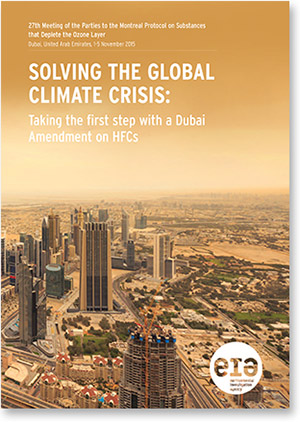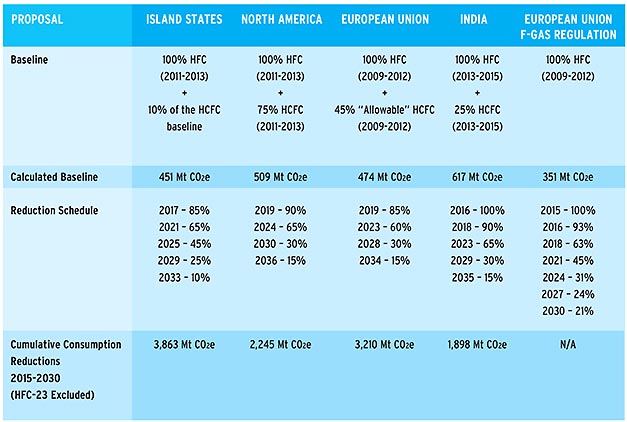EIA calls for ambitious MP proposals
26th October 2015 UK: Prior to next week’s Montreal Protocol meeting in Dubai, the EIA has called for more ambition from the developed countries in their HFC reduction proposals.
UK: Prior to next week’s Montreal Protocol meeting in Dubai, the EIA has called for more ambition from the developed countries in their HFC reduction proposals.
The Environmental Investigation Agency (EIA) maintains that the four HFC phase-down proposals already on the table fall far short of the TEAP MIT-3 scenario which aligns with the HFC phase-down already implemented by the EU in its F-gas regulations.
The Technology and Economic Assessment Panel was established by the United Nations Environment Programme in 1990 and acts as the technology and economics advisory body to the Montreal Protocol Parties.
TEAP’s MIT-3 scenario places bans on the use of high-GWP chemicals in new manufacturing as of 2020, with an average GWP of replacement refrigerants of 300 for both refrigeration and stationary air conditioning sectors.
The EIA insists that parties to the proposals by North America, India, the Island States and the European Union need to lower their baselines and establish more stringent reductions in the early years. The current proposals are shown in the table below.

The EIA also calls on non-A5 parties (the developed countries) to commit to expanding financing, technology transfer and capacity building to enable the developing, A5, parties to maximise one time transitions from HCFCs to low-GWP technologies.
With A5 parties still primarily relying on HCFCs, the EIA observes a time-limited opportunity for them to leapfrog “dead-end” HFC technologies and undertake a one-time transition from HCFCs to low-GWP alternatives. In that respect, parties are also asked to avoid setting the baseline too high or too far into the future for A5 countries to avoid encouraging unnecessary HFC growth in advance of the reduction schedule.
The full proposal document can be viewed and downloaded here.







